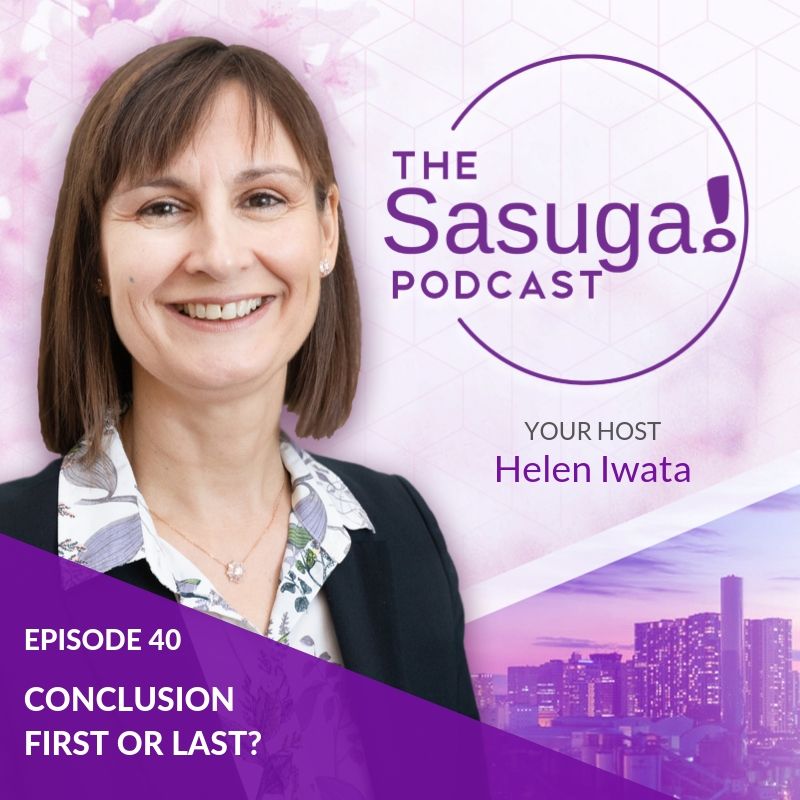You may have heard that it’s good to give your conclusion first in today’s business world. This is because many people are busy and want to get straight to the point.
This can apply to your presentations, meetings, and emails.
But if you’re Japanese, do you feel a little uncomfortable about this? You’re perhaps more comfortable with the traditional Japanese structure of kishotenketsu (起承転結), or Introduction, Development, Twist, Conclusion.
Which is better – conclusion first or last? And why?
In Episode 40 of the Sasuga! Podcast, you’ll hear the answer to this question, plus
- The reason why you may be confusing and losing your audience when you speak English in business situations (and it’s NOT because of your English capability)
- How to structure your message when you expect that the other person will be unhappy with what you’re proposing (how to deliver bad news in a good way)
- The story of when I sang the enka Hisame with simultaneous interpretation (and what that has to do with communication structure!)
(See below for more about the free 3-part training that I mention in this episode!)
Enjoy!
Prefer to listen on your podcast player?
For free weekly communication tips, resources, and updates in English to keep you learning, inspired, and informed, I invite you to become a reader of the Sasuga! Tips For You newsletter. You can easily unsubscribe at any time if you no longer find it valuable. To start reading and being a better and bolder global business communicator, click here and subscribe.


